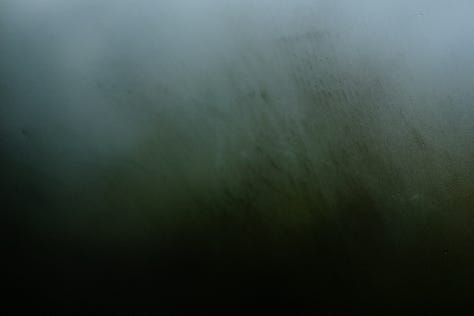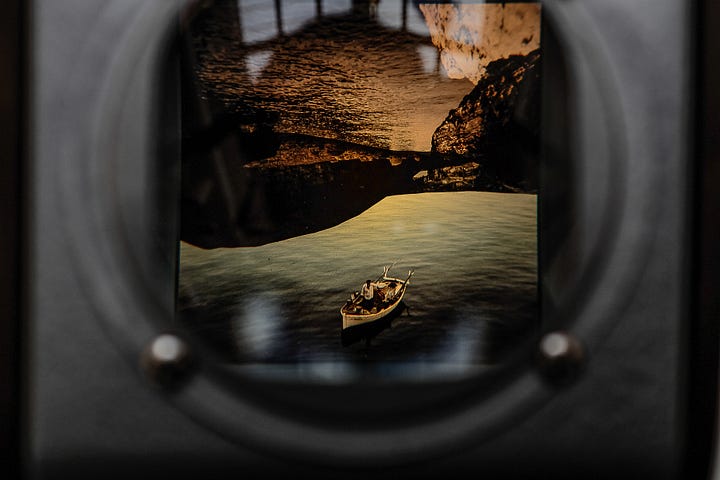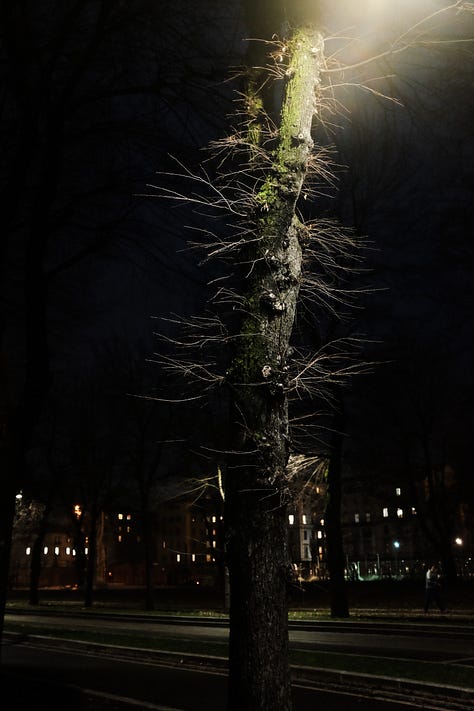Capturing the Unexplainable: Giulia Ferrando's Journey into Imaginative Freedom
Giulia Ferrando interviewed by Marta Rosellini
Emancipating photography from its traditional descriptive role and releasing its magical power. Physical linearity and logical narratives collapse in favor of a new promising opportunity for art. Giulia Ferrando unleashes her imaginative freedom to offer the unexplainable under the shape of precious images, born from skillfulness and spontaneity rather than from obsessive sterile planning. Let yourself get caught by this decadent and animistic imagery.
If you had to summarize your artistic vision in three words or concepts, which would you choose and why?
I’d choose a single word, which encompasses so many others: Magic. In an image, especially in a photograph, so many things coexist at once, that the result is a collapse of logical narratives, physical laws, and lastly the linearity of time and space. It is an actual reconfiguration of reality, in a new possible form. It is not only the reproduction of reality, but it is also the realization of one’s imagination. In this sense, it has a salvific significance, because it is the only escape from a univocal and fixed representation of reality. In my specific case, the mind is a place where things happen quickly and very chaotically, proceeding first by images and then by discourse. So, photographing has become almost a magical way of thinking.






Being also a teacher, could you share your didactical goals? How would you describe your approach to teaching and how does this influence your artistic vision?
I have been lucky enough to have had formative experiences in a wide variety of contexts. This has also greatly enriched the level of my awareness on the subject: it is very different to talk to people who have the same references as you or people with whom you have to find a completely new way of communicating. You realize how much in educational contexts, paradoxically, imaginative freedom gets swamped by the knowledge that instead of nurturing and growing, it sculpts it into definite forms. Thus, if there is one principle that never fails, it is perhaps the pleasure of doing something for yourself. Indeed, before being in a relationship with others, creativity is a relationship with yourself. By being aware of your uniqueness, and by being friendly while talking to yourself, you can achieve the capacity to find or rather create a safe place, one in which you can’t feel lost. So, my goal is to try to bring out each person's peculiar curiosity.



What challenges and issues do you think photography faces in the post-photographic era?
This is a question I really cannot answer, except by repeating things that have already been said by others. Certainly, however, I do not feel at all mine the catastrophism of those who cry the death of photography, the end of a golden age. On the contrary! The very fact that Photography was invented at a certain time and not at another is proof that as a species we have precisely this ability to imagine and create things that we are not even able to master and understand fully. In this sense, I prefer to embrace this somewhat esoteric aspect that is traditionally associated with image-making. Magical thinking is always good, because it welcomes the unexplainable, without having to measure and explain it at all costs. We have brought ourselves this far, let’s try to enjoy the adventure. Precisely because we approach it with ever-new tools, the future is pure potential.
Which dogmas should those who approach the world of photography in the contemporary art context overcome/defeat?
The first observation that comes to my mind is basic and somewhat cynical, but I would still like to leave it here as a point worth at least thinking about. The willingness to be part of the art world at all costs, no matter what, means setting limits for yourself, rather than putting yourself in a position to overcome them. It is a close competition, in which to make it in the short term you have to be both ‘innovative’ (to catch the curiosity), and ‘traditional’ (to be classifiable). The "art world" is a productive sector like any other, so it follows the times and rules of the market, which are difficult to reconcile with the needs of those who create and do research. It also tends to reward very few realities while completely ignoring others that are potentially equally good, in other words, it decreases the long-term perspective. Considering that it can be suitable for the most heterogeneous uses, there is no possibility that one photograph is worth it and another one is not in the artistic context. The main difference is in the awareness with which a certain language is chosen. Thus, dogmas are fine as long as they are seen and kept well in mind. Indeed, those who decide to throw their works into the world will always meet them, whether they want to or not.


You mentioned that your photos do not belong to a specific previously planned project. How does spontaneity relate to conceptual planning in your artistic vision?
The images I selected are not part of actual research, they are the result of a daily practice: I just do them, regularly and without a purpose like someone who practices a sport or meditation. I have been working with photography for more than a decade and at some point I realized that I wasn’t enjoying it anymore. If I took the camera in my hand I always felt the responsibility of the result and I had to find a solution to get rid of it. So, in 2016, I started carrying a digital compact camera with a built-in lens in my bag all the time, from which I directly export images to jpg. It’s opposed to the process I use to work, which is an activity that I conduct in a more methodical and studied manner, in addition to a lot of equipment and a workflow made up of several steps and decisions to be made. It seems like a detail, but even the appearance of the camera matters in the relationship with others because it also takes away the burden of performance, no one notices me, and if they do they don't take me seriously, which is liberating. It's a return to a more spontaneous level. Taking pictures just to imprint the images in memory. So, perhaps we can resolve this contradiction by saying that I make this exercise instinctively. The only conceptual feature of my production!






What was the message or atmosphere you intended to communicate with the current selection of photos? What were you alluding to visually and thematically?
These images are a skimming of the last eight years' photo shots. Now and then I dive into this screen of images and either take one or identify recurrences, and put together a few images, which when looked at out of context acquire an abstract visual quality and create new relationships between them. Like little galaxies. Visually some elements are repeated often, such as trees and darkness, and certain landscapes seem altered because for years I mostly shot from the train. In general, the photos that are saved from the flow are those with which I have an almost synaesthetic relationship because they give me back sensations that are not just visual. I feel cold, dense, soft, wet, or slow. It sounds strange, but I realized that in the end, the most common element is this mixture of sensations that are part of somewhat decadent and animistic imagery that is part of me
As a stage and contemporary dance photographer, do you perceive any similarities between these photos and your stage images?
I’d say yes. Conditions change. I feel like I’m part of the scene not just an observer. It's a total experience that requires putting things beyond the moment, bodies, and spaces, such as air density, tension, noise, and emotional temperature, into a state of visibility. What interests me the most is the mystery in photographs: when you look at them, it appears to be something more than the visible







